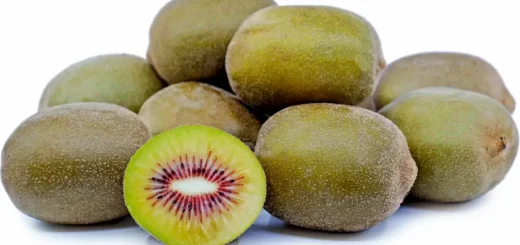Encouraging origins — Exporter Magazine

By Sue Ironside and Joseph Bracewell.
It’s taken a while, but New Zealand may finally be enacting its legislation for Geographic Indications (“GIs”) for wine and spirits. On 31 March, Ministers Tim Groser and Paul Goldsmith announced that by the end of 2015, Parliament will amend the Geographical Indications (Wine and Spirits) Registration Act 2006 (“the Act”), with an eye toward bringing the Act into effect in 2016.
As you can tell from the year of the Act, it’s been some time since this issue was in the spotlight – so what are GIs? And what effect will they have on the wine and spirits industries?
GIs originate from the European concept of “terroir” – the characteristics that the geography, geology and climate of a certain place express in agricultural products, particularly grapes used in wine production.
GIs are essentially what they sound like– they identify a good as coming from a particular location, which is the source of some attribute of the good, such as its quality or reputation. The classic example is Champagne – a protected term, only to be used for sparkling wines produced in the Champagne region of France.
The present situation
There is no active legislation relating to GIs at present. While the Act passed through Parliament nine years ago, it still requires an Order in Council from the Governor General to come into force.
Protection for GIs in New Zealand currently resides in the Fair Trading Act 1986, the tort of “passing off” and the Trade Marks Act 2002. Essentially, these protect GIs from being used in ways that are misleading or deceptive to consumers, by representing that the particular good originates from a region it does not – and therefore that it has the characteristic(s) of that region.
One tactic used in countries which do not provide legislative protection for GIs has been to register a Geographic Certification Mark. This is a certification trade mark which requires that goods of a certain type be produced in a certain area in order to use that mark.
Geographical Certification Marks registered in New Zealand include PARMIGIANO REGGIANO (Reg. no 255928), owned by the Consorzio del Formaggio Parmigiano Reggiano for cheese; and WAIHEKE ISLAND CERTIFIED WINE (Reg. no 767795) owned by The Waiheke Winegrowers Association Inc.
There are also Geographic Collective Marks, administered by regional industry organisations and usable only by members of those organisations. In New Zealand, the Consorzio del Prosciutto di San Daniele holds a collective trade mark for PROSCIUTTO DI SAN DANIELE SD (Reg. no 735330) in Class 29, covering “ham manufactured in and originating from San Daniele, Italy” and the Waiheke Winegrowers Association holds a collective image trade mark for WAIHEKE ISLAND OF WINE (Reg. no 658428).
The future of the Act
The aim of the Act is to provide a system for GIs that operates like the current New Zealand trade mark system. A register (and registrar) of GIs will be created, under which “interested parties” can apply to register the name and boundaries of a GI as well as whether it relates to wine, spirits or both. Foreign GIs will be able to be registered, but will not have the same boundary specification requirement.
Once a New Zealand GI has been registered for wine, it will be usable by any person so long as at least 85% of the wine is produced from grapes harvested in the relevant region and they obey any conditions on the GI. For New Zealand GIs covering spirits, and for foreign GIs covering wine or spirits, the requirement is simply that the product originates in the relevant region and that the GI is used in accordance with the conditions of its registration, in New Zealand or the country of origin.
The Act sets out a statutory definition for GIs:
“[…] an indication that identifies a wine or spirit as originating in the territory of a country, or a region or locality in that territory, where a given quality, or reputation, or other characteristic, of the wine or spirit is essentially attributable to its geographical origin.”
The Act will also provide limitations and exceptions, including special provisions for odd cases like homonymous GIs (GIs from different areas with the same name) – as, for example, there’s more than one area called Marlborough in the world.
Of course, as amendments are to be passed, the legal framework may change somewhat, but the Act is unlikely to differ significantly in its final form.
What this means for exporters
One of the biggest benefits in providing statutory protection for GIs is the reciprocal protection on offer in countries with equivalent laws – most of which require GIs to already be recognised in the nation they apply to. As foreign-registered GIs will be able to be registered in New Zealand, most nations with laws providing GI protection (most prominently, the EU states) will allow for New Zealand registered GIs to be included on their registers.
Exporters should keep an eye on the status of the Act, as the sooner a GI is registered in New Zealand, the sooner it will be able to be registered under equivalent systems overseas. Remember that once a GI is registered, its use is open to anyone who falls under it, so unless you’re feeling particularly generous, sharing the cost of registration among all producers and relevant associations who will benefit from the GI is a strategy worth considering.
The end result following passage of the Act should be that exporters will have less to worry about from producers in other countries trying to trade falsely on the back of New Zealand GIs, as well as having access to more efficient and effective means to pursue those who do.
Now that the ball is rolling with wine and spirits, we may see expanded protection for GIs across a wider range of goods introduced in time. But given the rate of progress observed so far, we’d advise against holding your breath.
Sue Ironside and Joseph Bracewell are with Baldwins Intellectual Property.






